You are using an outdated browser. Upgrade your browser today or install Google Chrome Frame to better experience this site.
Use this checklist to prepare for your next trip abroad. Make sure to bring items with you, since quality of items bought overseas cannot be guaranteed. Not all of these items may be relevant to you and your travel plans.

Pack for a Healthy Trip
Prescription medicines
- Your prescriptions
- Travelers’ diarrhea antibiotic
- Medicines to prevent malaria
Medical supplies
- Glasses and contacts
- Medical alert bracelet or necklace
- Diabetes testing supplies
Over-the-counter medicines
- Diarrhea medicine (Imodium or Pepto-Bismol)
- Antihistamine
- Motion sickness medicine
- Cough drops, cough suppressant, or expectorant
- Decongestant
- Pain and fever medicine (acetaminophen, aspirin, or ibuprofen)
- Mild laxative
- Mild sedative or sleep aid
Supplies to prevent illness or injury
- Hand sanitizer (containing at least 60% alcohol) or antibacterial hand wipes
- Water purification tablets
- Insect repellent (with an active ingredient like DEET or picaridin)
- Sunscreen (with UVA and UVB protection, SPF 15 or higher)
- Sunglasses and hat
First-aid kit
- 1% hydrocortisone cream
- Antibacterial or antifungal ointments
- Digital thermometer
- Oral rehydration salts
- Antiseptic wound cleaner
- Aloe gel for sunburns
- Insect bite anti-itch gel or cream
- Disposable gloves
- Cotton swabs (Q-Tips)
- Copies of your passport and travel documents
- Copies of all prescriptions (medications, glasses, or medical supplies)
- Health insurance card and documents
- Proof of yellow fever vaccination (if required for your trip)
- Contact card with the street addresses, phone numbers, and e-mail addresses of: Family member or close contact in the United States
- Health care provider(s) at home
- Lodging at your destination
- Hospitals or clinics (including emergency services) in your destination
- US embassy or consulate in the destination country or countries
Additional Resources
- Check the Transportation Security Administration website for updates on permitted and prohibited items, including medicines that you are allowed to carry onto an airplane.
- Some items may not be allowed in other countries. It is a good idea to check the Customs and Import Restrictions section of the U.S. Department of State Tips for Traveling Abroad.
- Enroll in the Department of State Smart Traveler Enrollment Program to get the latest safety updates and help in an emergency.
File Formats Help:
- Adobe PDF file
- Microsoft PowerPoint file
- Microsoft Word file
- Microsoft Excel file
- Audio/Video file
- Apple Quicktime file
- RealPlayer file
- Zip Archive file
Exit Notification / Disclaimer Policy
- The Centers for Disease Control and Prevention (CDC) cannot attest to the accuracy of a non-federal website.
- Linking to a non-federal website does not constitute an endorsement by CDC or any of its employees of the sponsors or the information and products presented on the website.
- You will be subject to the destination website's privacy policy when you follow the link.
- CDC is not responsible for Section 508 compliance (accessibility) on other federal or private website.
Masks Strongly Recommended but Not Required in Maryland, Starting Immediately
Due to the downward trend in respiratory viruses in Maryland, masking is no longer required but remains strongly recommended in Johns Hopkins Medicine clinical locations in Maryland. Read more .
- Vaccines
- Masking Guidelines
- Visitor Guidelines
Traveler's First-Aid Kit
What should a traveler's first aid kit include.
The American College of Emergency Physicians and the CDC encourage travelers to pack a first aid kit or a travel health kit for common medical emergencies. Pack the following items in your carry-on bag and keep it with you at all times:
Medicines you take on a regular basis at home. Take enough medicine for the planned trip plus extra in case your return home is delayed. Carry all medicine in their original containers with clear labels that identify your name and dosing schedule. If you have a chronic condition, such as diabetes, seizures, or allergies, consider wearing a medical alert bracelet.
Acetaminophen, ibuprofen, or aspirin to relieve headaches, pain, fever, and simple sprains or strains
Antihistamines to relieve allergies
Antacid medicine for upset stomach
Anti-nausea or motion sickness medicine. You may also want to include medicine for altitude sickness if traveling to high altitudes.
Antibacterial hand wipes or an alcohol-based hand cleaner (should contain 60% alcohol or more)
Masks, disposable or cloth
Bandages of assorted sizes to cover minor cuts and scrapes
Bandage closures, such as butterfly bandages, to tape edges of minor cuts together
Triangular bandage to wrap injuries and make an arm sling
Elastic wraps to wrap wrist, ankle, knee, and elbow injuries
Gauze in rolls, as well as 2-inch and 4-inch pads, to dress larger cuts and scrapes
Adhesive tape to keep gauze in place
Scissors with rounded tips to cut tape, gauze, or clothes, if necessary. Note that this may not be allowed in your carry-on bag if traveling by air.
Safety pins to fasten splints and bandages
Antiseptic wipes to disinfect wounds or clean hands and tweezers, scissors, or other utensils. Some of these items may not be allowed in your carry-on bag if traveling by air.
Antibiotic ointment to prevent infection in cuts, scrapes, and burns
Hydrogen peroxide to clean and disinfect wounds
Disposable, instant-activating cold packs to cool injuries and burns, as well as for use in strains and sprains
Tweezers to remove small splinters, foreign objects, bee stingers, and ticks from the skin. Note that this may not be allowed in your carry-on bag if traveling by air.
Disposable rubber gloves to protect hands and reduce the risk for infection when treating wounds
Thermometer (no mercury and no glass) to take temperatures in case of illness
Calamine lotion to relieve itching and irritation from insect bites and poison ivy
Hydrocortisone cream to relieve irritation from rashes
Sunscreen of SPF 15 or higher
Aloe gel for sunburns
Insect repellent. Those appropriate for use on children should contain 10% to 30% DEET. Those for adults should contain 30% to 50% DEET or up to 20% of picaridin. The chemical can cause harm when absorbed through the skin. Don't use insect repellant on infants 2 months of age or younger. Don't use products that combine DEET with sunscreen.
Medicine to prevent malaria, if needed where you are traveling
Over-the-counter medicine for diarrhea. Talk with your healthcare provider about a prescription for an antibiotic you can take in case of diarrhea.
Cough and cold medicines
Epinephrine auto-injector for people with severe allergies
List of prescription medicines and generic names
Latex condoms
Water purification tablets
Extra pair of contact lenses or prescription glasses
Follow the same safety measures with the medicines in your first aid kit as you do with all medicines, and use only as recommended by your healthcare provider. Make sure children can't get into the first aid bag. Use child safety caps whenever possible. Also be aware of volume limits in carry-on bags. Some of these items may need to be packed in your checked luggage while flying. Check expiration dates and discard medicine that is out-of-date. If someone has a life-threatening allergy, carry the appropriate medicine with you at all times.
Find a Doctor
Specializing In:
- Travel Medicine
At Another Johns Hopkins Member Hospital:
- Howard County Medical Center
- Sibley Memorial Hospital
- Suburban Hospital
Find a Treatment Center
Find Additional Treatment Centers at:
Request an Appointment

Food Poisoning
Fish Poisoning
Enterohemorrhagic Escherichia coli
An official website of the United States government Here's how you know
Official websites use .gov A .gov website belongs to an official government organization in the United States.
Secure .gov websites use HTTPS A lock ( Lock A locked padlock ) or https:// means you’ve safely connected to the .gov website. Share sensitive information only on official, secure websites.
Plan your Travel
⚠ The COVID-19 Public Health Emergency expired as of May 11, 2023. This site will no longer be updated and will remain online for historical purposes only.
For current COVID-19 guidance, please visit the Centers for Disease Control and Prevention (CDC) .

- Before booking your trip, check for international travel advisories and destination-specific COVID-19 risk . Refer to individual state, territorial, tribal, and local government websites for domestic travel advisories and information about quarantine or other restrictions.
- The UNWTO-IATA Destination Tracker is a free online tool for travelers to get information on COVID-19 requirements for international travel and the measures in place at the destination.
- Review CDC’s considerations for Travel During COVID-19 before you go to determine your personal risk.
- Pack Smart! Pack Safe! Know what is in your carry-on and checked bags and make sure there are no prohibited items inside before arriving at the checkpoint. As a temporary exemption from the 3-1-1 rule, TSA is allowing one oversized liquid hand sanitizer container, up to 12 ounces per passenger, in carry-on bags. These will need to be placed in a bin during the screening process. Passengers may also bring hand wipes through checkpoints.
- Unused COVID-19 test kits do not contain dangerous goods and are typically allowed in both carry-on and checked baggage.
- COVID-19 test kits containing diagnostic samples (e.g., nasal swabs and vials of sputum) are not allowed in carry-on baggage. These samples must be properly packaged, handled, and identified as a UN3373 Category B Infectious Substance (PDF) during transportation. Passengers should check with their carrier before packing COVID-19 test kits containing diagnostic samples in checked baggage or shipping as cargo. Individual carriers and international requirements may be more restrictive than domestic regulations. Visit FAA’s Pack Safe site for more information.
- CDC recommends wearing a mask throughout your travel experience.
- Consider joining TSA PreCheck ™. Members continue to be eligible for expedited screening procedures and have the shortest wait times. TSA PreCheck provides the most convenience and least amount of physical contact at the TSA checkpoint. Visit TSA PreCheck to enroll today.
- Have a travel plan that does not rely on the U.S. government for assistance. Visit travel.state.gov for more information.
- Make two copies of all your travel documents in case of emergency, and leave one with a trusted friend or relative.
- Remember, if you are sick, stay home and do not travel! Contact your airline regarding their re-booking and cancellation policies .
*All information developed in accordance with CDC guidelines.

How to Get a COVID Test for International Travel
A negative covid test continues to be a requirement to travel the world—including for entry into the united states. here’s how to get the right test when you need it..
- Copy Link copied

COVID tests are the must-have travel item of the pandemic.
Photo by Shutterstock
The need for COVID testing doesn’t appear to be going away anytime soon. Even as more people get vaccinated worldwide against COVID-19, variants such as Delta and Omicron have put numerous countries on high alert. Once again, there are new—and in some cases, stricter—COVID testing requirements for travel.
As of December 6, the United States began requiring that all international arrivals get tested for COVID no more than one calendar day before flying to the United States , regardless of vaccination status. That’s down from three days prior, making it even more of a last-minute challenge to get tested before flying to the U.S.
France and the United Kingdom also reintroduced COVID testing requirements in December for all travelers, regardless of vaccination status. The sudden developments served as a reminder of how quickly travelers sometimes have to scramble to find tests that satisfy new rules—for many, it’s overnight. How do you stay on top of so many changes? How do you know what you need? Look here for starters.
Whether travelers are in search of a COVID test before heading abroad or need to re-enter the U.S., here are the (numerous) options and ways to get a COVID test for international travel.
What kind of COVID test is required to enter the U.S.?
According to the official order issued by the U.S. Centers for Disease Control and Prevention (CDC), COVID tests that satisfy the U.S. entry requirement include a PCR test, antigen test (including a rapid antigen test), or an approved home or self test , which means that there are some easier options than a PCR test, the results for which can take longer to obtain—though, there are services that offer “rapid PCR” tests, usually for an added cost.
CDC-approved COVID self tests for international travel

The BinaxNOW Antigen home kit is sold as a six-pack for $150, which comes out to $25 for each kit.
Courtesy of Abbott
For travelers who are worried about obtaining a PCR or antigen test within a day of flying back to the U.S., there is the option of bringing a set of COVID-19 home or self tests with them. The CDC has approved a handful of self tests for international travel. They include the BinaxNOW COVID-19 Antigen Home Test , the Ellume COVID-19 Home Test with Azova , and Cue COVID-19 tests —all of which we have reviewed .
The tests can be self-administered—meaning you do your own nasal swab—but to meet the CDC requirements, they must be paired with a supervised telehealth video call in real time. (The above tests include the telehealth call service.) Travelers, take note: You must have a reliable internet connection wherever you plan to administer the test, so logging into the telehealth video call isn’t an issue.
Related We Reviewed the CDC-Approved COVID Home Tests for International Travel—Here’s What to Know
How to find a testing site abroad
Want to find out if the country you’re planning to visit has COVID testing sites that can turn around results within a day? A great place to start is the U.S. State Department’s detailed COVID-19 travel information and country-specific advisories , which include an entire section on COVID-19 testing for each country. Right up front, the section answers the question of whether PCR and/or antigen tests are available to U.S. citizens and whether test results are reliably available within one calendar day. It also often includes information about where and how to obtain such tests.
Another good resource is TestforTravel.com , where you can search any international destination for testing centers and filter by the specific type of COVID-19 test you’re looking for.
The good news is that testing has ramped up worldwide, and it has become more widely available at international airports and hotels. Travel companies—including airlines, cruise lines, and tour operators—and travel advisors are also stepping in to help international travelers either actually get tested or find testing sites in their destination. The bad news is that pricing varies wildly. Tests can run anywhere from several dollars to several hundred dollars, which can make travel budgeting a bit of a nightmare.
American Airlines, United Airlines, and Delta Air Lines have all developed resources to provide passengers with international testing information. American is doing so with the VeriFly app , a global health pass that allows users to more easily upload their health data.
Through its United app, United has added a feature called the “ Travel-Ready Center ” (located in the “My Trips” section of the app or online at United.com ). Once passengers access the Travel-Ready Center, they can identify COVID-19 travel requirements for upcoming trips, find local testing options, and upload proof of test results (as well as vaccination status).
Delta, too, has developed an easy COVID-19 testing search function on its website through which travelers can find testing center locations in numerous global destinations.
How to find a COVID test in the U.S. to travel internationally
First and foremost, you need to make sure you’re up to date on the latest entry requirements for the country or countries you plan to visit, or even just enter—there’s never been a better time to fly nonstop. As we have seen throughout the pandemic, these rules can change very quickly at times.
Again, the U.S. State Department’s country-specific COVID-19 advisories are a great place to start to find up-to-date entry rules and requirements. We have also rounded up our favorite interactive map tools that provide updated global COVID-19 travel information.
Once you know what’s required, whether you need a PCR or antigen test, for example, and within what time frame (between two and three days, or 48 to 72 hours, is the most common requirement), you can begin to track down testing options near you.
Mail-in COVID self tests
COVID testing throughout the U.S. is patchy at best in terms of availability and reliability, and it varies enormously from city to city, county to county, and state to state. Earlier this month, President Biden announced that at-home COVID tests will become more available and will be covered by private insurance plans. Additional details will be available in January, but there are a few home or self tests that travelers can stock up on with mail-in options that may qualify for health insurance reimbursement and that satisfy certain international government requirements for entry. (Of course, if the COVID test entry requirement is a very tight time frame—say, two or three days prior to travel—these mail-in options might not work.)
Note that these tests can be used for travel from the U.S. to international destinations that will accept the results , not the other way around. The tests that work for inbound travel to the U.S. from abroad were mentioned above and were reviewed by AFAR editors.
Here are some of the options we have found for self tests that could work for travel:
- EverlyWell COVID-19 Test Home Collection Kit DTC ($109 per test, or discounted for $81.75 with code GIVEMORE): This FDA-authorized PCR test is delivered within two to eight business days of order, so it should be ordered at least a couple of weeks before travel. Once you receive it, take the self-administered test and mail it the same day using the included overnight delivery label. Upon receiving the sample, the lab will provide results within 24 to 48 hours.
- Pixel by Labcorp COVID-19 Test At-Home Collection Kit ($119 per test): An FDA-authorized PCR test that is typically delivered within two days of order. The self test includes a FedEx overnight label that travelers use to send the sample back to the lab, where results are processed within one to two days.
- LetsGetChecked COVID-19 Pre-Flight Test & Lab Report ($109 per test): A home testing kit that travelers can order in advance. The company advises at least five days prior to travel (but why not stock up even earlier than that?). After collecting the sample yourself using a nasal swab, you then send it to the lab with a prepaid next-day delivery label, and results can be expected within 24 to 72 hours after arriving in the lab. This is also an FDA-authorized PCR test.
In-person COVID testing options in the U.S.
Large pharmacy chains such as CVS and Walgreens , healthcare networks, and county and state health agencies are among the numerous entities that offer COVID testing but not always with the guarantee of receiving results within a specific two- or three-day window. Travelers may need to rely on pricier local private providers and urgent care centers (such as CityMD and Medical Offices of Manhattan in New York and COVIDCheckToday in Southern California, Denver, Las Vegas, and Miami) to get a test for travel quickly. DMCOVID-19 Test is a nationwide testing service that does house calls and offers same- and next-day results—for a hefty fee; same-day services will run you around $300 and next-day around $220.
Getting tested at the airport
Another option (or backup option if waiting until just before departure is a little too nerve wracking for you) is to get tested at the airport.
XpresSpa Group’s XpresCheck brand now has COVID-19 testing locations at 11 U.S. airports, including Atlanta, Boston, Denver, Dulles, Houston, Newark, New York (JFK), Phoenix, Seattle, and San Francisco. Services include a standard PCR test with results within 48 to 96 hours (for $75) and a rapid PCR test with results within 60 minutes (for a much heftier $250). Beyond XpresCheck, countless U.S. airports have their own testing facilities as well now, so travelers can look into options at their local hub.
U.S. airports that have COVID testing facilities include:
- Los Angeles International Airport
- Oakland International Airport
- San Diego International Airport
- Connecticut’s Bradley International Airport
- Fort Lauderdale–Hollywood International Airport
- Miami International Airport
- Tampa International Airport
- Daniel K. Inouye International Airport (Honolulu, Hawai‘i)
- Chicago O’Hare International Airport
- Chicago Midway International Airport
- Minneapolis–St. Paul International Airport
- New York’s LaGuardia Airport
- Portland International Airport
- Philadelphia International Airport
- Dallas/Fort Worth International Airport
- Seattle-Tacoma International Airport

What happens if you test positive?
“If you were to test positive for COVID-19 while overseas, you would need to postpone your trip back to the United States, potentially for several weeks. All travelers should have a plan B,” the U.S. State Department’s Acting Assistant Secretary for Consular Affairs, Ian Brownlee, said during a January 26 media briefing when the testing requirement for international travelers entering the U.S. was first introduced.
Brownlee noted that U.S. travelers should consider where they would stay, the cost of an extended stay, and the repercussions they would face if they could not immediately return, whether for work, for childcare issues, or other responsibilities.
“Think through the answers to these important questions carefully” prior to committing to travel plans, Brownlee said. Another recommendation he has for international travelers: Consider travel insurance that covers COVID-19 medical treatments and COVID-19 related travel disruptions.
And the same goes for outbound travel—travelers need to consider what kind of safeguards they have in place, including the cancellation policies for all components of their trip, in the event that they or anyone in their travel group tests positive before flying out.
>> Next: The Best Travel Plan This Holiday Season: A Backup Plan

Considering an at-home COVID test before a trip? What travelers need to know
- The Biden administration plans to distribute more at-home tests at no cost to Americans.
- Some at-home tests can also be used by international travelers to enter the U.S.
- At-home tests may be hard to find as demand soars with the omicron surge.
Whether you're traveling abroad or visiting family this winter, health experts say at-home coronavirus tests can be a convenient way to reduce the risk of spreading the virus.
While the tests have been expensive and hard to find in recent months, the Biden administration is working to make at-home tests more accessible . The White House announced earlier this month that it will distribute more tests to health centers and rural clinics and have private insurance providers offer reimbursements. On Tuesday, the administration announced that Americans will soon be able to have free at-home tests mailed to their homes.
The announcement is part of the administration's plan to combat the delta and omicron variants this winter.
"We’re taking even more steps to make it easier to get tested and get tested for free," President Joe Biden said Tuesday .
From accuracy to pricing, here's what travelers should know about at-home coronavirus tests:
Learn more: Best travel insurance
► CDC travel updates: CDC orders airlines to share contact information on travelers from 8 African countries
► COVID-19 updates: First confirmed US case of the omicron variant detected in California
How soon can I get free at-home tests?
The Departments of Health and Human Services, Labor and Treasury are set to issue guidance by Jan. 15 that would allow over-the-counter coronavirus diagnostic tests to be reimbursed by group health plans or health insurance providers. The U.S. Food and Drug Administration has authorized eight over-the-counter tests that are on the market today.
Americans who do not have private insurance will also be able to access free at-home tests at community sites. The Biden administration said it would distribute 50 million tests to community sites and rural clinics, double the count pledged in September.
Also starting in January, Americans will be able to request free at-home coronavirus tests that can be ordered online and mailed to their address.
► Free at-home COVID tests: Biden to promote COVID-19 plan that includes free at-home tests and new travel rules
How do at-home tests work?
At-home rapid tests, also referred to as self-tests, are different than the PCR tests travelers can take at a pharmacy or lab. While PCR tests are used to identify if someone has been infected, many of the over-the-counter home testing kits are rapid antigen tests that can detect whether a person is infectious.
The main advantage of rapid antigen tests is their speed. The tests can provide results within 15 minutes, whereas some PCR test results can take days.
"Generally, what people want to know when they're getting a test for the holidays is: Am I a risk to somebody? Am I potentially infectious right now?" said Michael Mina, a former Harvard epidemiologist recently named chief science officer at telehealth company eMed. "For that answer, these rapid tests are really crucial because they're fast, so they actually give you real-time information, not information about your status three days ago."
Although speed is a major advantage, rapid tests are less sensitive than PCR tests and may not detect COVID-19 if the viral load is low. Accuracy rates improve for people who are experiencing symptoms.
Testing methods vary between brands. Some at-home tests require a nasal swab, while others ask for a saliva sample. Travelers can also choose between tests that offer results in minutes and others that can be mailed into a lab and analyzed.
Whatever at-home test you prefer, the Centers for Disease Control and Preventionsuggests people wash their hands with soap, clean the surfaces where the testing will take place, check the expiration date before use, and follow instructions carefully.
How accurate are the at-home COVID test kits?
Health experts say rapid at-home antigen tests are not as accurate as PCR tests , which are often tested in a lab and can take hours to process.
"People should know that they are more likely to be accurate if you have symptoms," said Rebecca Fielding-Miller, assistant professor of public health at the University of California, San Diego. "They are generally less accurate than the PCR – the diagnostic tests you would get through your county or your provider."
False positives and false negatives are rare, although possible, with self-tests. The CDC found Abbott's BinaxNOW rapid antigen test was less sensitive than PCR tests with asymptomatic users. The test correctly gave a positive result 85% of the time compared to a PCR test, and correctly gave a negative result 99% of the time.
The Quidel Quickvue rapid antigen test correctly gave a positive result 84% of the time for people with symptoms and correctly gave a negative result 99% of the time.
Ellume reports that its home test results are 96% accurate, but the company had to recall more than 2 million tests this year because they were giving "higher-than-acceptable" false-positive test results.
► COVID test recall: Ellume recalls hundreds of thousands of home coronavirus test kits over false positive concerns
Spokespeople for Ellume declined to comment.
When should I use an at-home test?
Many health experts said they planned to take at-home tests before their own family gatherings during the holiday travel season.
"If we know that everyone in the room ...has been tested negative just hours earlier, then that creates a much much safer environment," Mina said. "We know that … nobody is actively infectious and spreading the virus to each other, so you can be much more comfortable taking off your mask and enjoying the evening."
Fielding-Miller, who has a stack of self-tests ready for emergency use, said people who develop COVID-19 symptoms can opt for at-home tests, especially if they have plans to visit others.
"If you have a little cough or a cold and you're really nervous and you're about to go see Grandma, it's amazing and really reassuring to have that on hand. Especially, if you're you're already vaccinated. It's a nice way to double-check and make sure that things are OK," she said. "I think everybody should have five of these in their bathroom, just ready to go at all times."
Kevin Ban, Walgreens' chief medical officer, suggests PCR or RNA amplification tests for people who are traveling and asymptomatic who have not recently been exposed to the virus. PCR test results often come back within two to three days, although some locations offer faster (and often more expensive) rapid PCR tests. RNA amplification test results come back within about 24 hours, Ban said. Both are available in select pharmacy drive-thrus.
"Those are the most sensitive tests and usually good for assurance testing," Ban said. "(At-home rapid antigen tests) are very good when a person is symptomatic (or) when a person does testing on a serial basis."
Can travelers returning to the U.S. use self-tests?
The CDC requires all international air travelers 2 and older take a viral test (such as an antigen test or nucleic acid amplification test) before entering the U.S.
The country accepts certain self-tests, which means travelers can purchase the tests before their trip and pack them to use before their return flight. The U.S. only selects self-tests that meet certain criteria:
- It must be either a nucleic acid amplification test or antigen test granted Emergency Use Authorization by the U.S. Food and Drug Administration.
- Testing must include remote supervision from the manufacturer so the telehealth proctor can confirm that the person’s identity and test results. Some tests with telehealth services may require a prescription.
- Airlines and aircraft operators must be able to review and confirm a traveler’s identity and test result details.
► Omicron variant: More travel restrictions as new variant emerges
The testing options that are suited to international travelers entering the U.S. include:
- Abbott’s BinaxNOW COVID-19 AG Card Home test (the company’s BinaxNOW antigen self-test, which is available over the counter, is not eligible for travel purposes).
- Ellume COVID-19 Home Test.
Stephen Kissler, a postdoctoral fellow at the Harvard T.H. Chan School of Public Health, noted that more international travelers may be opting for at-home tests after the CDC on Dec. 6 tightened testing requirements for international air travelers , dropping the pre-departure testing window from three days to one.
"In most places, it's difficult to get a one-day turnaround on a PCR test," Kissler said. "So I anticipate that these (tests) are probably going to have to be some form of rapid test," including at-home tests.
How much do at-home COVID tests cost?
Free at-home tests in the U.S. won't be available until January. If you're looking to buy a rapid at-home test for international travel in the meantime:
- A six-pack of the BinaxNOW home test can be purchased on eMed for $150 (shoppers are limited to one item per order), or as a three-pack for about $100 through Optum. The test is not available over the counter.
- The Ellume home test is available for international travel through Azova, and available at retailers including Amazon, Target, Walmart, CVS and Everlywell, according to its website. Prices for the test start at around $25, but some sites warn that they are out of stock. (More than 2 million Ellume tests have been recalled in the U.S.) Video observation from Azova costs $20 .
If you're looking to buy an over-the-counter at-home test, popular brands include:
- Abbott’s BinaxNOW COVID-19 Antigen Self Test (A two-pack costs about $24 at CVS and Walgreens and $14 at Walmart).
- Pixel by Labcorp COVID-19 PCR Test Home Collection Kit (About $125 at CVS and Walgreens).
- QuickVue At-Home OTC COVID-19 (A two-pack costs about $24 at CVS and Walgreens and $25 at Everlywell).
- InteliSwab’s COVID-19 Rapid Antigen Home Test (A two-pack is about $24 at Walgreens and $14 at Walmart).
- Intrivo Diagnostics’ On/Go COVID-19 Antigen Rapid Self-Test (A two-pack is about $24 at Walgreens).
Buyers should be prepared to find some tests unavailable at certain retailers.
Where can I buy a COVID test kit?
At-home tests have been difficult to track down in recent months, with some consumers comparing them to the toilet paper and hand sanitizer shortages in the early days of the pandemic.
The Biden administration has been working to ramp up the availability of the tests and is spending nearly $2 billion total to procure more than 280 million kits and announced that retailers Amazon, Kroger and Walmart will sell kits at a discount of up to 35% from retail prices.
Abbott, which is behind one of the most popular at-home tests in the country, scaled up manufacturing and is now making more than 50 million tests per month, according to spokesperson John Koval.
"As breakthrough infections continue to occur, air travel resumes, and people head indoors as the weather changes, we see a critical role for rapid testing – especially as people celebrate the holidays and return to their pre-pandemic lifestyle," Koval said in an emailed statement.
► 'Vast majority are not reported': Home coronavirus tests make it impossible to track all cases
► 'Like toilet paper and hand sanitizer: At-home COVID-19 tests hard to find as Biden mandate looms
Walmart offers the BinaxNow in-store and online and the Inteliswab on its website, along with a few other tests sold by other sellers through its marketplace. Spokesperson Tricia Moriarty told USA TODAY that the company has seen high consumer demand for the past few months, but has “been able to increase our inventory both in-store and online in recent weeks.”
Walgreens offers four over-the-counter tests: Abbott’s BinaxNow, the Everlywell COVID-19 Test Home Collection Kit, QuickVue At-Home OTC COVID-19 Test Kit and the Pixel by Labcorp COVID-19 PCR Test.
Some health experts worried that shoppers might have trouble finding the tests in stores over the holidays.
“We’re delayed putting resources, as a nation, into these tests until very recently. So for the holidays, we're going to see that there's going to be a shortage,” Mina said. “Still today, in much of the country, you can’t just walk into your CVS or Walgreens and just assume you’ll be able to pick up a test.”
Retailers like Walgreens, CVS and Amazon have started limiting the number of testing kits consumers can purchase due to increased demand spurred by the spread of omicron.
Amazon shoppers can buy no more than 10 of its branded at-home testing kits, CVS is restricting buyers to six over-the-counter testing kits while Walgreens limits shoppers to four over-the-counter antigen tests at its pharmacies.
"As the nation experiences a surge in COVID-19 cases coinciding with the holidays, we are seeing unprecedented demand for related testing and vaccine services and products," Walgreens said in a Tuesday statement.
► At-home COVID tests: Amazon places limits on sales amid spike in demand
Does Hawaii accept at-home tests?
Unvaccinated U.S. citizens will have to show proof of a negative coronavirus test to enter Hawaii. The state accepts select at-home results provided by the state's testing partners , including:
Costco/AZOVA : The at-home observed saliva test is available at Costco for travelers 5 and older. The test is shipped overnight to a lab, where results should be ready within 12 to 48 hours after arrival. The test costs about $115, according to Costco's website. The store also offers in-pharmacy testing for travelers in select markets.
Vault Health : Travelers five and older can take this saliva test at home with real-time supervision via video chat. Results are mailed back within 72 hours.
Do cruises accept at-home test results?
The CDC recommends people get tested one to three days before a cruise and three to five days after, regardless of vaccination status.
- Royal Caribbean International and Celebrity Cruises accept self-tests that have emergency use authorization and are taken under the supervision of a telehealth proctor.
- Carnival Cruise Line , Princess Cruises and Holland America Line allow vaccinated travelers to use home tests taken under the supervision of a telehealth proctor.
- Starting Jan. 17, Norwegian Cruise Line will require all guests to show proof of a negative COVID-19 antigen or PCR test result within two days prior to boarding a cruise from a U.S. port and will accept medically supervised home tests.
How long is the shelf-life for these tests?
Expiration dates vary by brand, but some can last up to a year. Earlier this year, the FDA extended the shelf life for Abbott’s BinaxNOW COVID-19 Ag Card to 12 months.
► 'Trying to catch every case': Are cheap home coronavirus tests the delta antidote?
Contributing: Ken Alltucker, USA TODAY
Follow USA TODAY reporter Bailey Schulz on Twitter: @bailey_schulz .
FOR THE TRAVELER
A library of free resources, tools and information for safe travel.
Travel Health Advice | About Us | Prepare for Travel | Stay Healthy During Travel | Newsletter
Travelers’ Rapid Health Information Portal
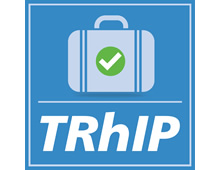
Heading Home Healthy
Heading Home Healthy is a free program that provides resources to help travelers stay healthy when they are returning home to visit friends and relatives.
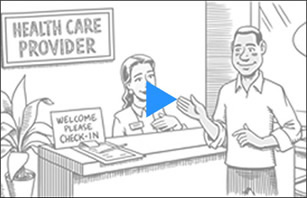
Healthy Travel Checklist
A video about how to prepare for a healthy international trip.

See a Healthcare Provider

Are you in New York City?
Heading Home Healthy Safety Flyers
Travel Health Kit
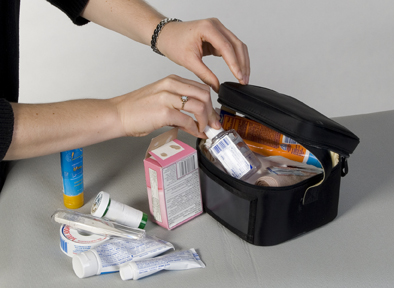
Malaria: One Family's Story
A family's story about Malaria, including the impact of the infection and how to prevent it.

Malaria Stories: Importance of antimalarial medication
Richard Oni, PhD, Progressive Individual Resources Inc, shares his experience with malaria after traveling to visit friends and relatives back home in Nigeria. Watch Dr. Oni’s full story: https://youtu.be/2we10pqzbNY

Enter your email address to subscribe to our monthly newsletter.
View this month's Travel Health Newsletter .
Travelers can now buy CDC-approved at-home COVID-19 tests for just $50

Update 8/11/21: Wait times have improved dramatically over the past few days, with our latest test requiring just a 9-minute hold for a test guide.
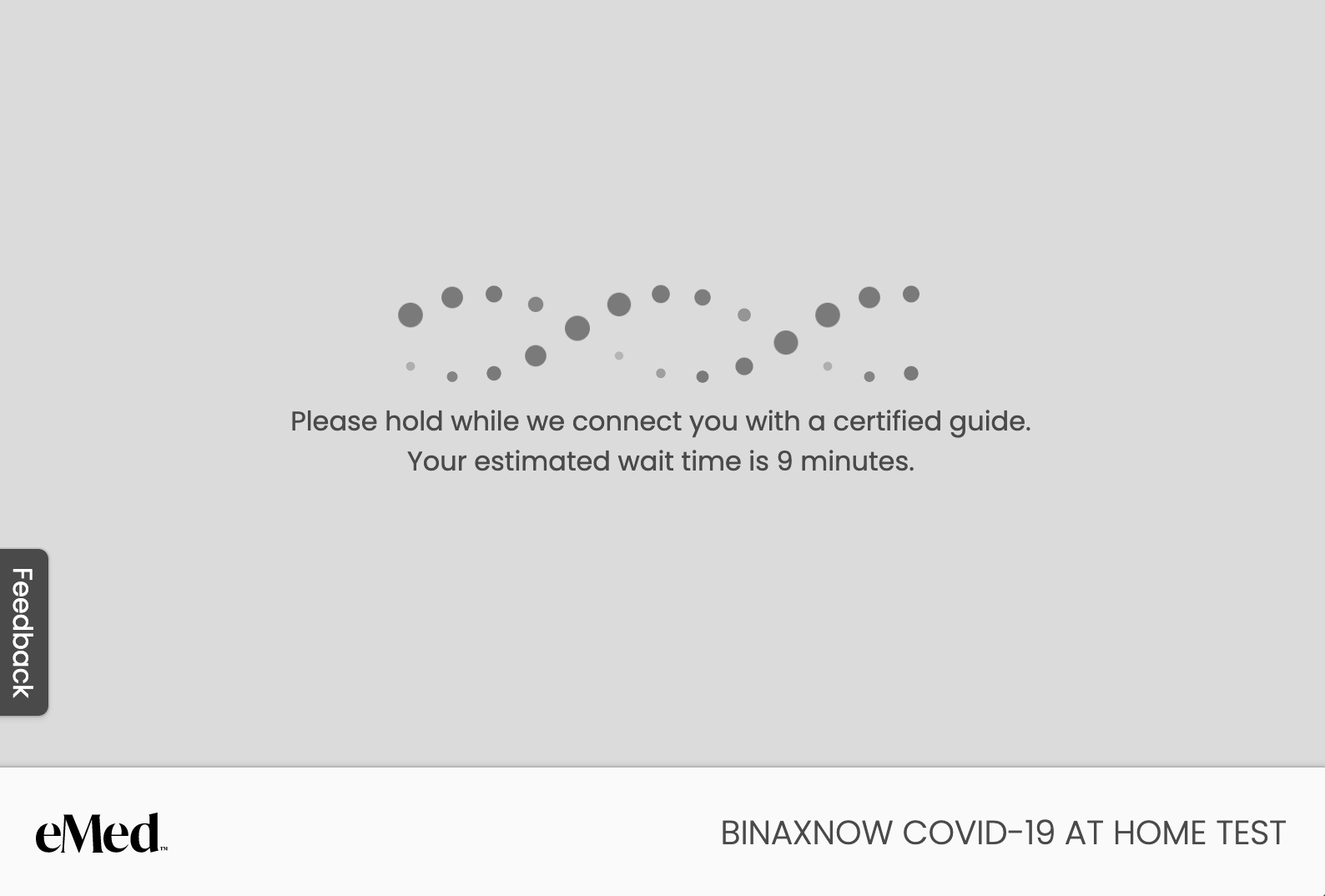
Update 8/6/21: Customers are currently facing hours-long wait times, likely due to a sharp rise in demand. We waited two hours and 40 minutes to be connected with a technician today, however the wait for the results analyst was only a couple of minutes.

Update 7/16/21: Travelers can now purchase Abbott's BinaxNow COVID-19 Home Test at select Walgreens stores in California, New Jersey and New York for $35 each. You'll need to confirm availability then print and complete a pick-up form to bring to the store here .
Update 7/15/21: The Ellume COVID-19 Home Test is eligible for travel to the United States as well. Tests are available on this page and priced at $50 (plus $15 shipping) each.
Earlier this year, the U.S. Centers for Disease Control and Prevention (CDC) expanded the testing program for international travel to the United States, allowing airlines to accept at-home instant tests that include remote supervision.
As of this writing, Abbott's BinaxNow COVID-19 Home Test appears to be the only instant at-home (or in this case, at-hotel) option that's accepted for travel back to the U.S., since the test is supervised and administered remotely via Zoom. Results are available within 15 minutes.
Travelers can also choose to secure an instant or PCR test at their destination, or use a mail-in supervised PCR test option, which may be available in select countries via Vault. The at-home test from Abbott is by far the easiest solution, though.
For more TPG news delivered each morning to your inbox, sign up for our daily newsletter .
Which test to order
You'll need to order the kit before you depart the U.S. and bring it along on your trip so you can complete the test within the required three-day window .
For the first few months, you could only purchase Abbott's BinaxNow COVID-19 Home Tests in packs of six through a company called eMed . That option remains available for $150, but another distributor, Optum, has since begun selling the tests individually.
Optum is offering one kit for $50 , two kits for $70 or three for $100 . An Optum phone agent confirmed that tests may be shared with other travelers — a three-pack could cover a family of three, for example.
I ordered a six-pack for $150 through eMed , which includes supervision for each test.
I was prompted to enter my name and date of birth when placing my order, though you can also add the names of two other travelers, who can then use any of the six test kits themselves. All users must be 4 years of age or older.
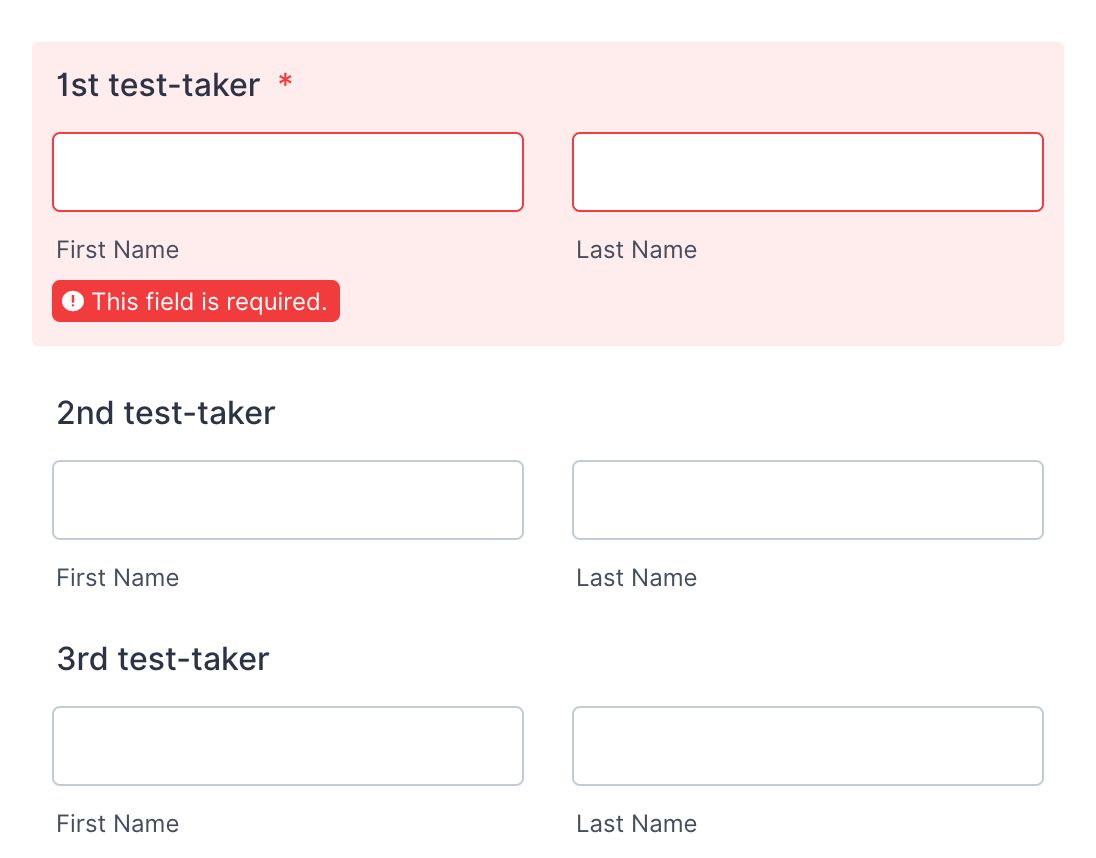
To recap, your current purchase options include:
- $50: One test via Optum
- $70: Two tests via Optum
- $100: Three tests via Optum
- $150: Six tests via eMed
You'll also want to consider bringing at least one spare along per person in case of an "inconclusive" result. Alternatively, you may be able to complete a test at a facility abroad, but I'd recommend confirming availability in advance if you decide to order just one Abbott test per person.
While this particular Abbott test is compliant, a similar version sold through pharmacies may not be, so be sure to select the option that includes access to the NAVICA smartphone app and has exterior packaging that says, "Do not open until instructed to do so."
My six-pack arrived the day after I placed my order and appeared to be valid for about four months, so I'll be able to use the remaining kits for future trips. (Editor's note: Following an FDA extension, tests are valid for an additional three months past the printed expiration date.)
Taking the test
When it was time to test, I downloaded the Navica app, created an account and logged in via the web browser on my computer. I then began a short questionnaire.
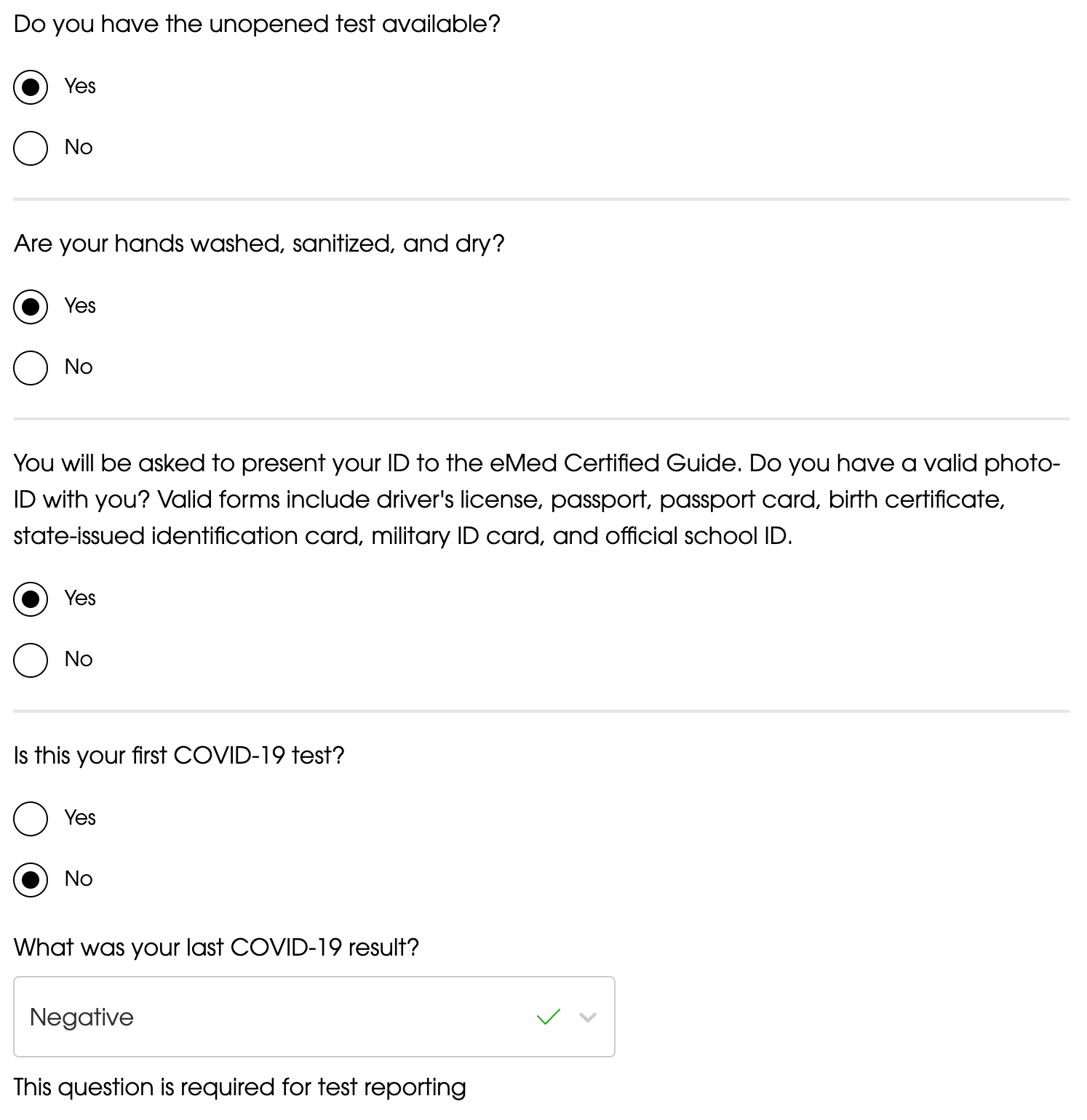
There was an option specifically for people testing for re-entry to the United States, so that's what I picked.
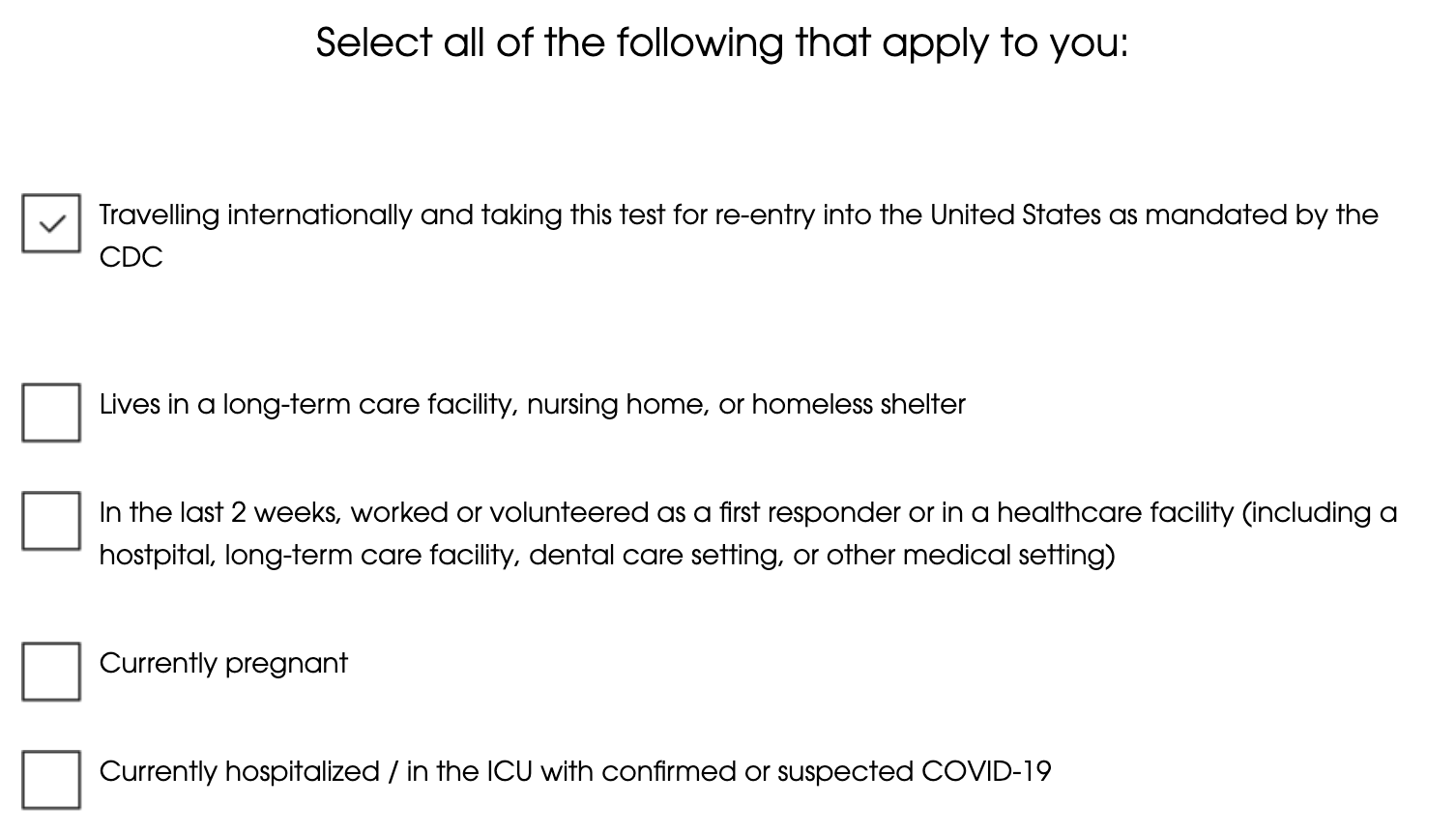
I was prompted to select my airline and country from a drop-down menu, with a field to enter the city as well.
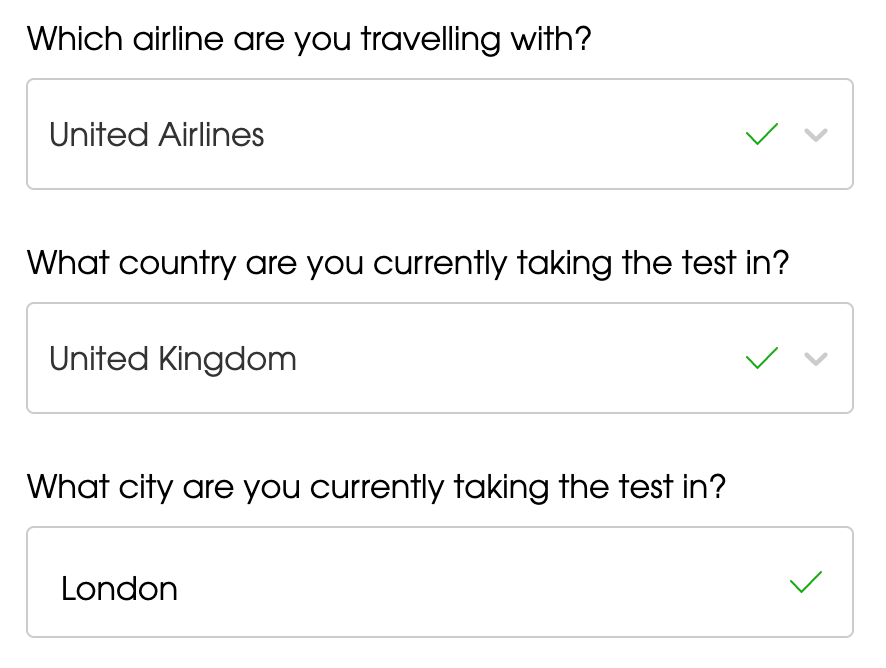
After I completed the survey, I clicked to begin the test. Juan joined the call a minute or so later and began walking me through the process.

After asking me to position the camera so he could see both my face and the entire test kit, Juan instructed me to break the seal on the test and begin the process.
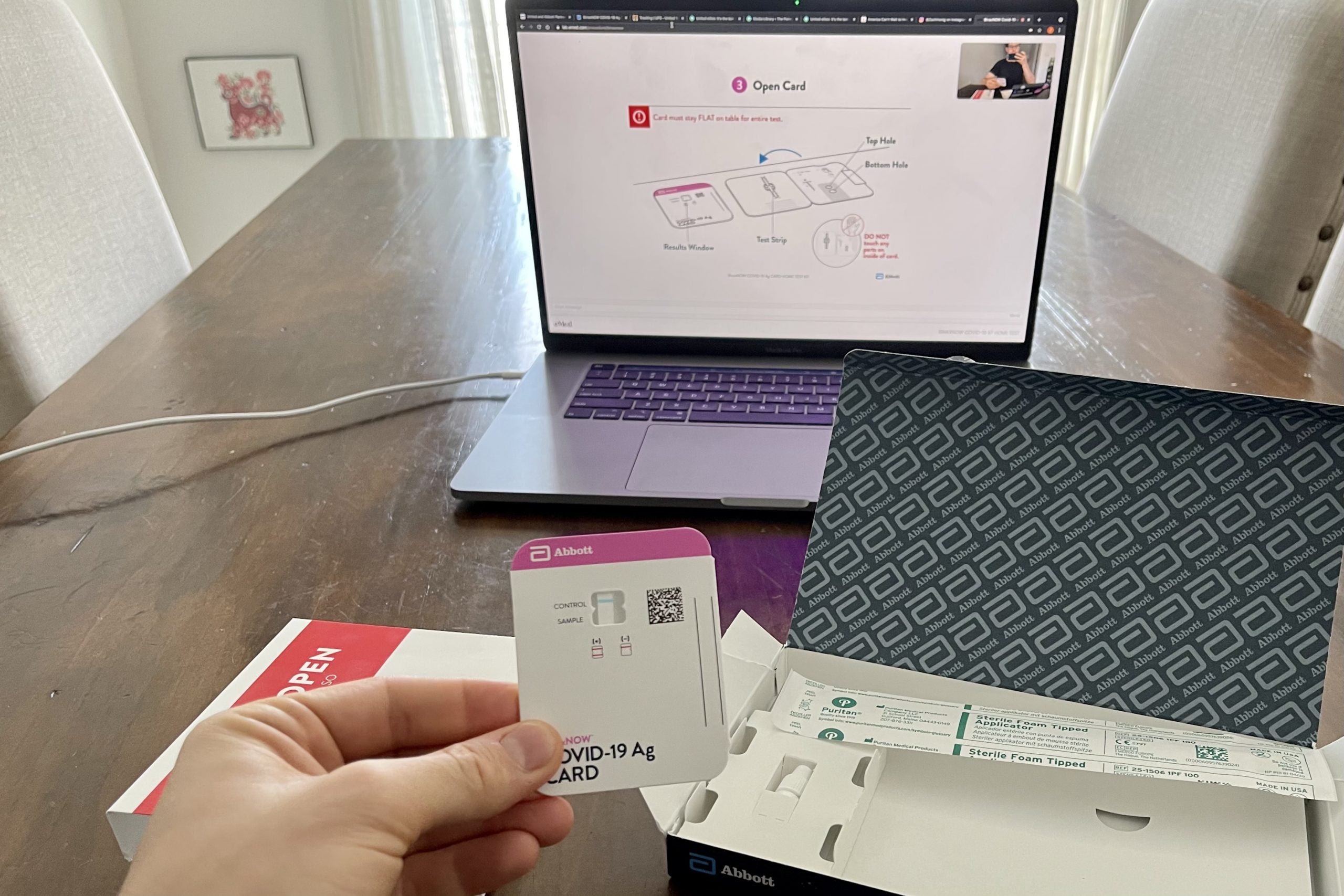
In total, it took just a couple of minutes, from opening the kit to preparing the card to conducting the all-too-familiar nasal swab.
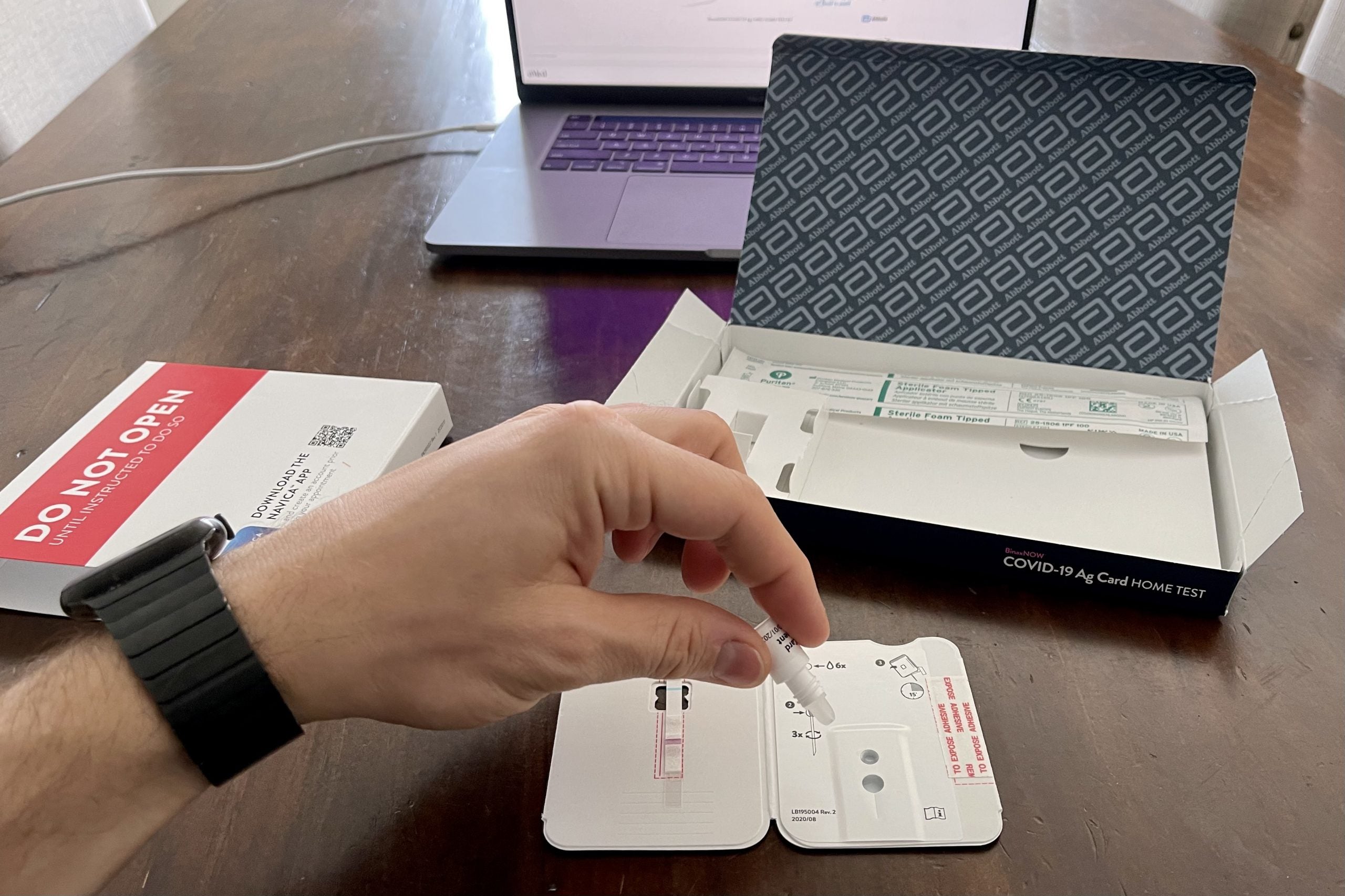
After that, Juan started a timer for 15 minutes and we said our goodbyes — he told me he usually conducts 12 tests per hour over an eight-hour shift, or nearly 100 tests every day. Go, Juan!

A new guide, Lianne, appeared a minute after the 15-minute timer was complete. She seemed to have a bad connection, so we communicated using the chat function, which worked just fine.
After scanning the QR code on my test and confirming the negative result — one thin pink line, instead of two — she sent me my results via email and ended the call. The results were available instantly in my Navica app as well.
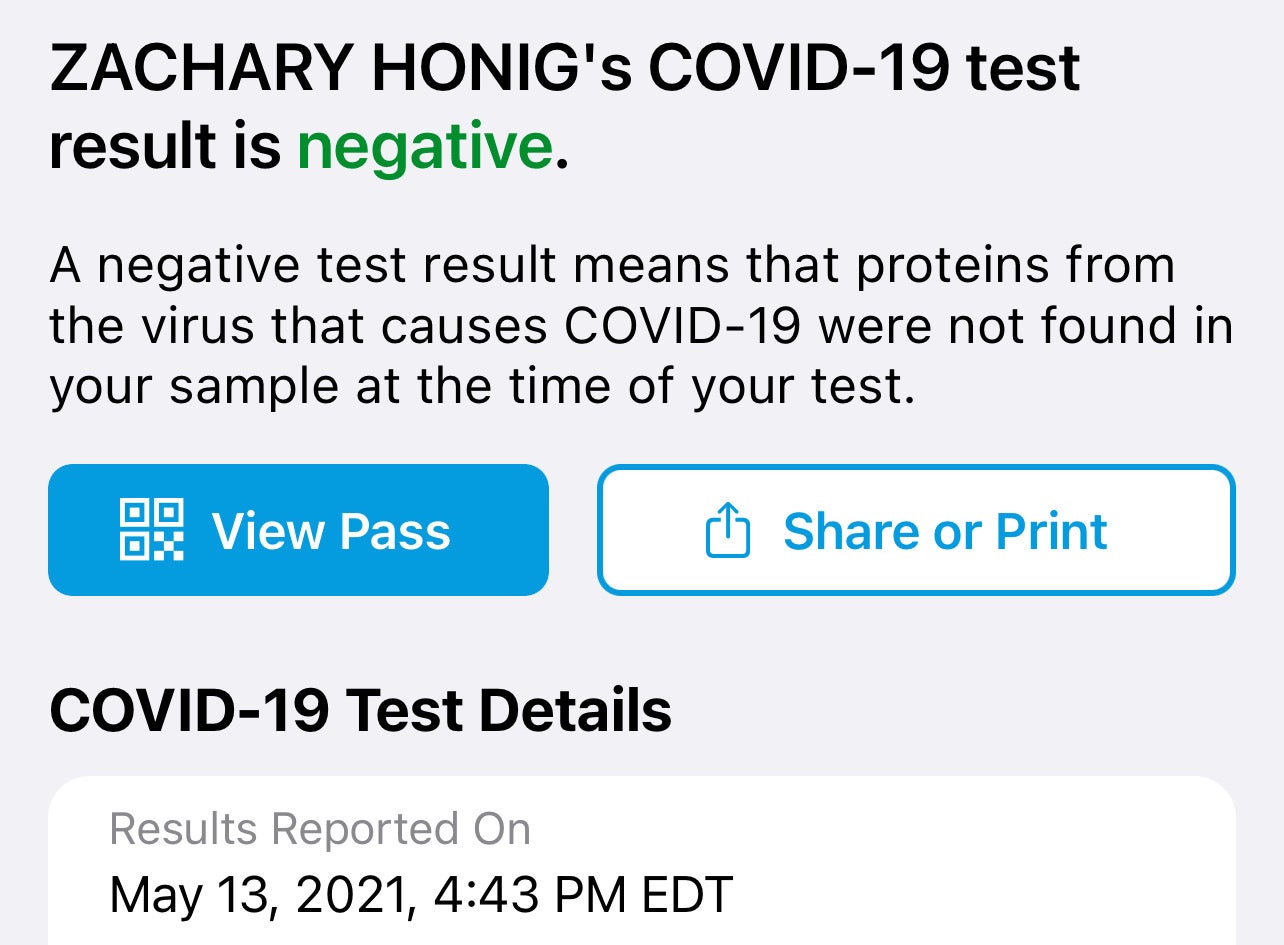
I also got a special "pass," which included a QR code and could be shared via text, email and other methods.
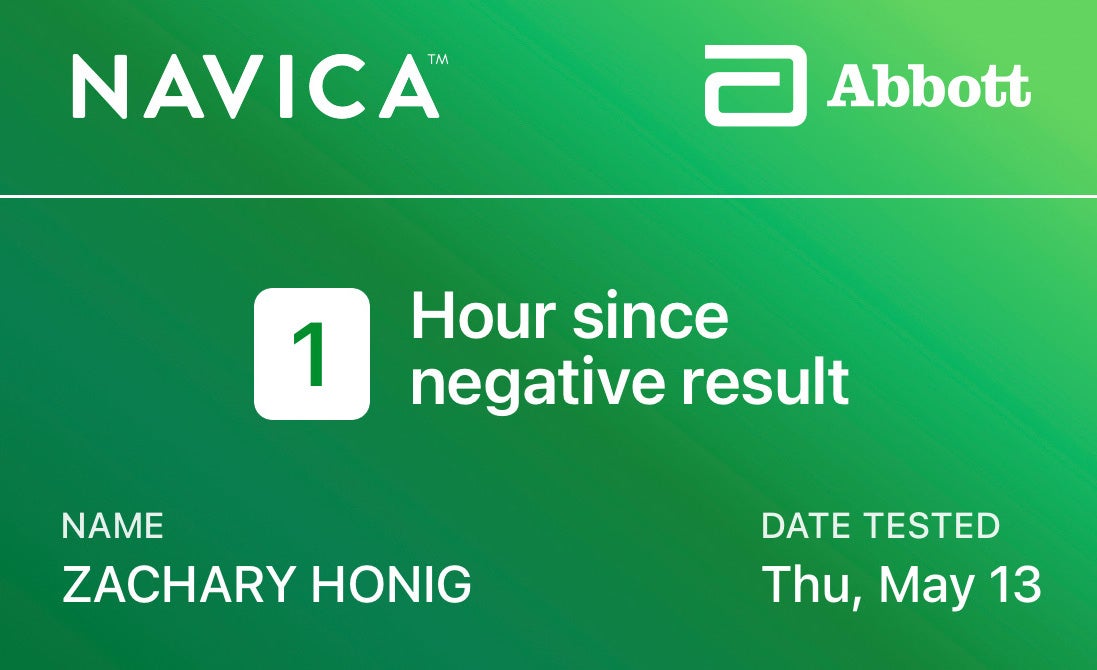
While other approved tests could pop up, Abbott's BinaxNow COVID-19 Home Test seems to be the best option for now. United Airlines confirmed that this particular test is compatible with the airline's " Travel-Ready Center ," and American is accepting the test as well, making it easy to link your results with your reservation.
Bottom line
For now, the supervised at-home COVID-19 test appears to be a traveler's best bet for packing a test that's CDC approved, letting you take 15 minutes out of your trip for an at-home test rather than losing a day looking for a lab at your destination.
While travelers were initially required to purchase tests in packs of six, you now have the option of ordering smaller quantities, as outlined below:
Traveling with dogs to the U.S.? The new CDC rules you'll have to follow
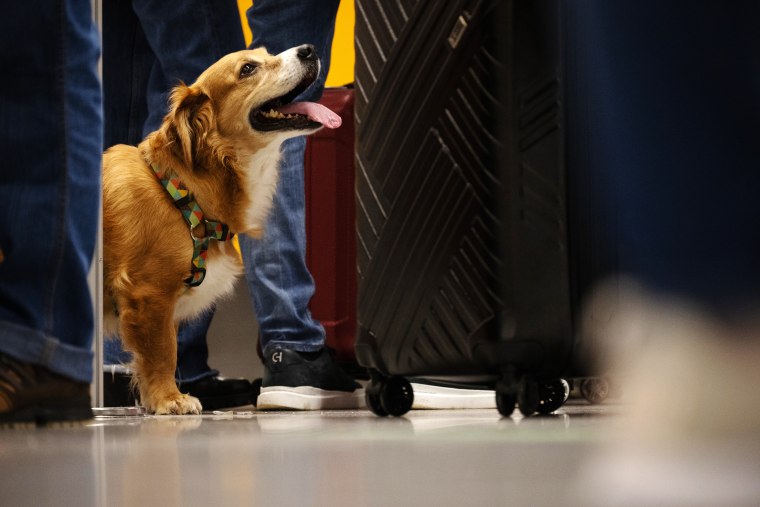
All dogs coming into the U.S. from other countries must be at least 6 months old and microchipped to help prevent the spread of rabies, according to new government rules published Wednesday.
The new rules require vaccination for dogs that have been in countries where rabies is common. The update applies to dogs brought in by breeders or rescue groups as well as pets traveling with their U.S. owners.
“This new regulation is going to address the current challenges that we’re facing,” said Emily Pieracci, a rabies expert at the Centers for Disease Control and Prevention who was involved in drafting the updated regulations.
The CDC posted the new rules in the federal register on Wednesday. They take effect Aug. 1 when a temporary 2021 order expires. That order suspended bringing in dogs from more than 100 countries where rabies is still a problem.
The new rules require all dogs entering the U.S. to be at least 6 months, old enough to be vaccinated if required and for the shots to take effect; have a microchip placed under their skin with a code that can be used to verify rabies vaccination; and have completed a new CDC import form.
There may be additional restrictions and requirements based on where the dog was the previous six months, which may include blood testing from CDC-approved labs.
The CDC regulations were last updated in 1956, and a lot has changed, Pieracci said. More people travel internationally with their pets, and more rescue groups and breeders have set up overseas operations to meet the demand for pets, she said. Now, about 1 million dogs enter the U.S. each year.
Dogs were once common carriers of the rabies virus in the U.S. but the type that normally circulates in dogs was eliminated through vaccinations in the 1970s. The virus invades the central nervous system and is usually a fatal disease in animals and humans. It’s most commonly spread through a bite from an infected animal. There is no cure for it once symptoms begin.
Four rabid dogs have been identified entering the U.S. since 2015, and officials worried more might get through. CDC officials also were seeing an increase of incomplete or fraudulent rabies vaccination certificates and more puppies denied entry because they weren’t old enough to be fully vaccinated.
A draft version of the updated regulations last year drew a range of public comments.
Angela Passman, owner of a Dallas company that helps people move their pets internationally, supports the new rules. It can be especially tricky for families that buy or adopt a dog while overseas and then try to bring it to the U.S., she said. The update means little change from how things have been handled in recent years, she said.
“It’s more work for the pet owner, but the end result is a good thing,” said Passman, who is a board member for the International Pet and Animal Transportation Association.
But Jennifer Skiff said some of the changes are unwarranted and too costly. She works for Animal Wellness Action, a Washington group focused on preventing animal cruelty that helps organizations import animals. She said those groups work with diplomats and military personnel who have had trouble meeting requirements, a reason some owners were forced to leave their dogs behind.
The Associated Press

IMAGES
COMMENTS
Cough drops, cough suppressant, or expectorant. Decongestant. Pain and fever medicine (acetaminophen, aspirin, or ibuprofen) Mild laxative. Mild sedative or sleep aid. Supplies to prevent illness or injury. Hand sanitizer (containing at least 60% alcohol) or antibacterial hand wipes. Water purification tablets.
What should a traveler's first aid kit include? The American College of Emergency Physicians and the CDC encourage travelers to pack a first aid kit or a travel health kit for common medical emergencies. Pack the following items in your carry-on bag and keep it with you at all times: Medicines you take on a regular basis at home.
Per the CDC: "At this time all air passengers, 2 years or older, traveling to the U.S., regardless of vaccination or antibody status, are required to provide a negative COVID-19 viral test result or documentation of recovery unless exempted.". That means all travelers entering the U.S. must provide proof of a negative COVID test (PCR ...
The free tests are meant to help more travelers comply with CDC travel guidance, which says all air travelers should get a COVID-19 viral test three to five days after entering the U.S. Post ...
Yes. CDC recommends that all travelers avoid all cruise ship travel worldwide, including river boats. Reports of COVID-19 on cruise ships highlight the risk of infection to cruise ship passengers and crew. Like many other viruses, COVID-19 appears to spread more easily between people in close quarters aboard ships.
Self-tests for COVID-19 give rapid results and can be taken anywhere. Self-tests detect current infection and are sometimes also called "home tests," "at-home tests," or "over-the-counter (OTC) tests.". They give you results in 10-15 minutes and are usually antigen tests. These are different from laboratory-based PCR tests or self ...
Review CDC's considerations for Travel During COVID-19 before you go to determine your personal risk. ... Unused COVID-19 test kits do not contain dangerous goods and are typically allowed in both carry-on and checked baggage. COVID-19 test kits containing diagnostic samples (e.g., nasal swabs and vials of sputum) are not allowed in carry-on ...
The self test includes a FedEx overnight label that travelers use to send the sample back to the lab, where results are processed within one to two days. LetsGetChecked COVID-19 Pre-Flight Test & Lab Report ($109 per test): A home testing kit that travelers can order in advance.
Travelers should additionally follow any requirements at their destination. CDC also recommends that you get tested 3-5 days after international air travel AND stay home for 7 days. Even if you test negative, stay home for the full 7 days. If you don't get tested, it's safest to stay home for 10 days after travel.
CDC travel updates:CDC orders airlines to share contact information on travelers from 8 African countries ... Amazon shoppers can buy no more than 10 of its branded at-home testing kits, CVS is ...
Travel Health Kit. A useful guide to help you think of things to pack for a healthy trip. View the travel health kit list. Malaria: One Family's Story. A family's story about Malaria, including the impact of the infection and how to prevent it. Watch Video. Malaria Stories: Importance of antimalarial medication
Protect yourself from COVID-19 with the best travel-sized hand sanitizers of 2021. Shop Purell and Germ-X hand sanitizer from Amazon, Walmart and more.
That option remains available for $150, but another distributor, Optum, has since begun selling the tests individually. Optum is offering one kit for $50, two kits for $70 or three for $100. An Optum phone agent confirmed that tests may be shared with other travelers — a three-pack could cover a family of three, for example.
The set of 6 test kits costs $150 and can be delivered to most locations in the US within 48 hrs of ordering. The 6 kits are meant for 3 travelers. Each person has a spare, just in case one of the test results comes back as "inconclusive" and a retest is needed. Tests come in a pack of 6, good for 3 travelers.
All dogs coming into the U.S. from other countries must be at least 6 months old and microchipped to help prevent the spread of rabies, according to new government rules published Wednesday. The ...